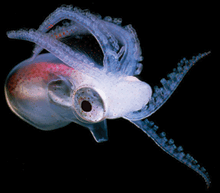 I'll set aside the hack bioinformatics posts for now and give an update on my transformation experiments... We’ve gotten access to a few lanes of Illumina GA2 sequencing for some preliminary studies, and right now I’m drying the genomic DNA samples that we plan to sequence.
I'll set aside the hack bioinformatics posts for now and give an update on my transformation experiments... We’ve gotten access to a few lanes of Illumina GA2 sequencing for some preliminary studies, and right now I’m drying the genomic DNA samples that we plan to sequence.The notion is to sequence several independent transformants of Haemophilus influenzae to get some idea of how much donor DNA taken up by cells finds its way into recipient chromosomes. This pilot study will go a long way in informing our planned large-scale experiments and give us a chance to learn how to handle the data.
Here’s what I did to produce the material...
...some transformations, of course!

 First, I PCR amplified the gyrA and gyrB alleles from the MAP7 strain (which confer nalidixic acid and novobiocin resistance, respectively). MAP7 is a derivative of our recipient strain KW20 containing several point mutation that confer antibiotic resistances.
First, I PCR amplified the gyrA and gyrB alleles from the MAP7 strain (which confer nalidixic acid and novobiocin resistance, respectively). MAP7 is a derivative of our recipient strain KW20 containing several point mutation that confer antibiotic resistances.I used these PCR products to transform our donor strain 86-028NP to provide two selectable markers in the donor. I’ve been calling this strain 1350NN.
Then I extracted DNA from this strain and used it as the donor DNA to transform KW20 competent cells. By selecting for one or both markers, I can ensure that clones chosen for DNA extraction and sequencing were indeed derived from competent cells that got transformed.
 Our baseline expectation is that there will be a large segment (10-50kb) of donor alleles in the transformants at selected sites and 2-3 additional large segments elsewhere in the genome.
Our baseline expectation is that there will be a large segment (10-50kb) of donor alleles in the transformants at selected sites and 2-3 additional large segments elsewhere in the genome.Originally, we were going to do this transformation with only a single marker, but we realized that having two would allow us to measure the frequency of co-transformation.
Here’s what the transformation rates looked like:
 I used MAP7 DNA as a donor as a control. Since MAP7 is more closely related to KW20 than 86-028NP, it is perhaps unsurprising that transformation rates were higher when using MAP7 as donor.
I used MAP7 DNA as a donor as a control. Since MAP7 is more closely related to KW20 than 86-028NP, it is perhaps unsurprising that transformation rates were higher when using MAP7 as donor.As for co-transformation, here’s the frequency of double transformants versus expected:
 That corresponds to ~25-35% of the cells in the competent cell preparation actually being competent. I’ve been wracking my brain unsuccessfully trying to figure out how to do a back-of-theenvelope calculation as to how many independent molecules we expect to transform any given recipient. I just can’t figure out a concise or reasonable way to do it. Suffice it to say, I estimate a minimum of 20 kb of donor DNA in each transformant (1% of the genome), up to perhaps 100 kb (5% of the genome).
That corresponds to ~25-35% of the cells in the competent cell preparation actually being competent. I’ve been wracking my brain unsuccessfully trying to figure out how to do a back-of-theenvelope calculation as to how many independent molecules we expect to transform any given recipient. I just can’t figure out a concise or reasonable way to do it. Suffice it to say, I estimate a minimum of 20 kb of donor DNA in each transformant (1% of the genome), up to perhaps 100 kb (5% of the genome).There’s only one way to find out…

No comments:
Post a Comment